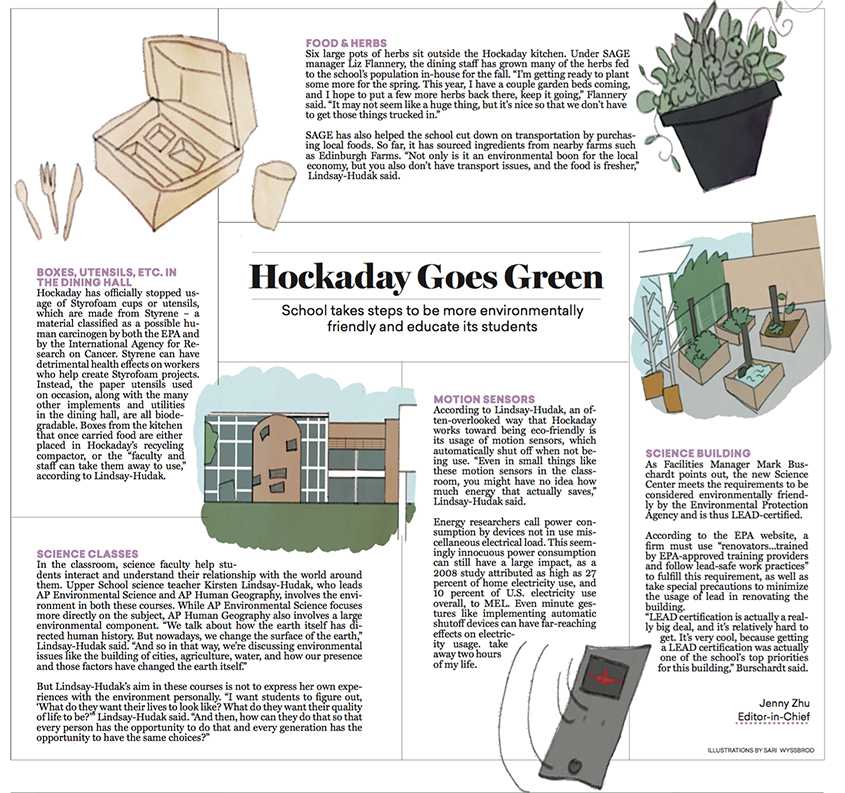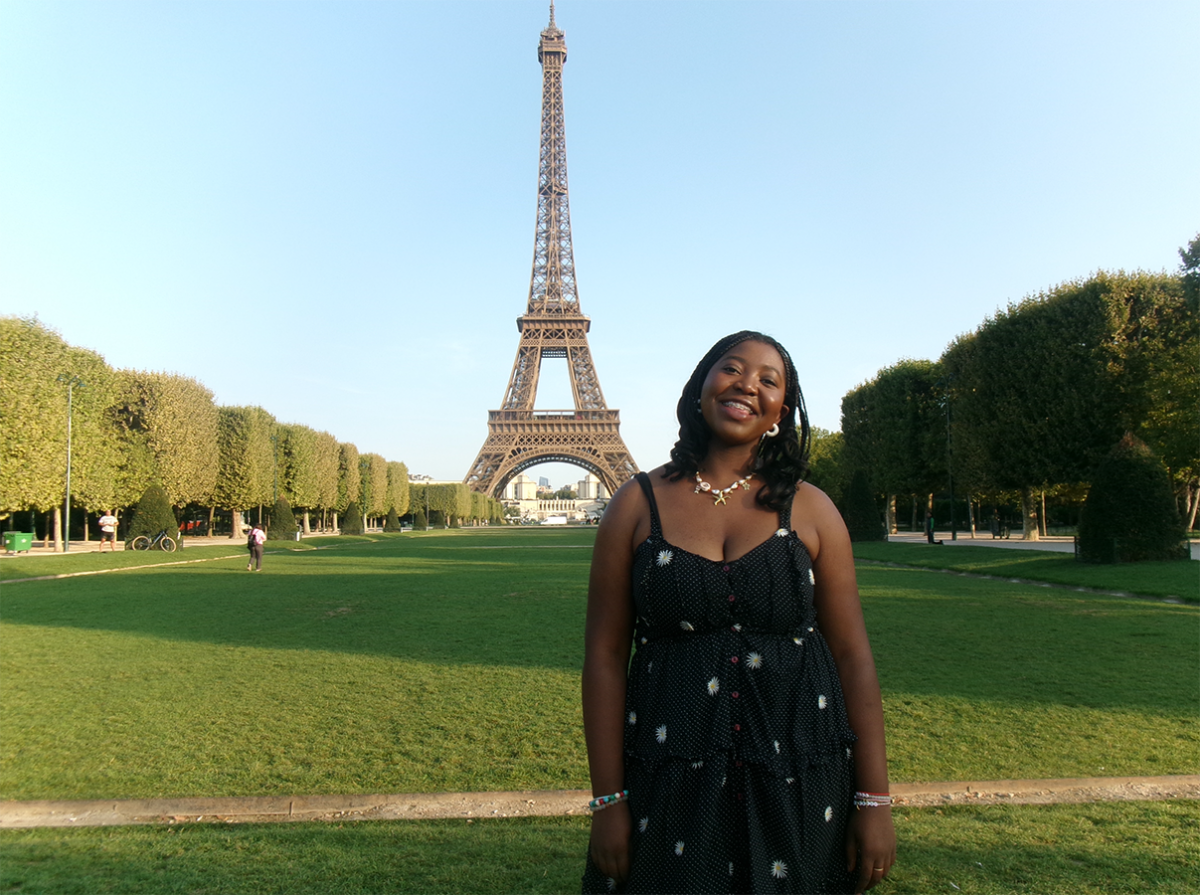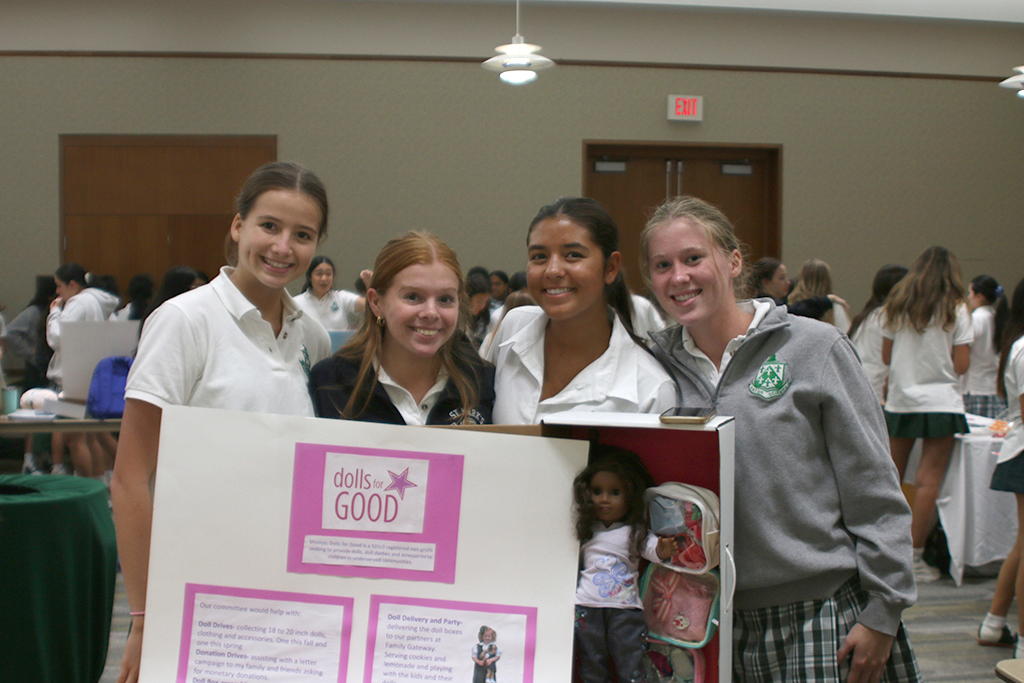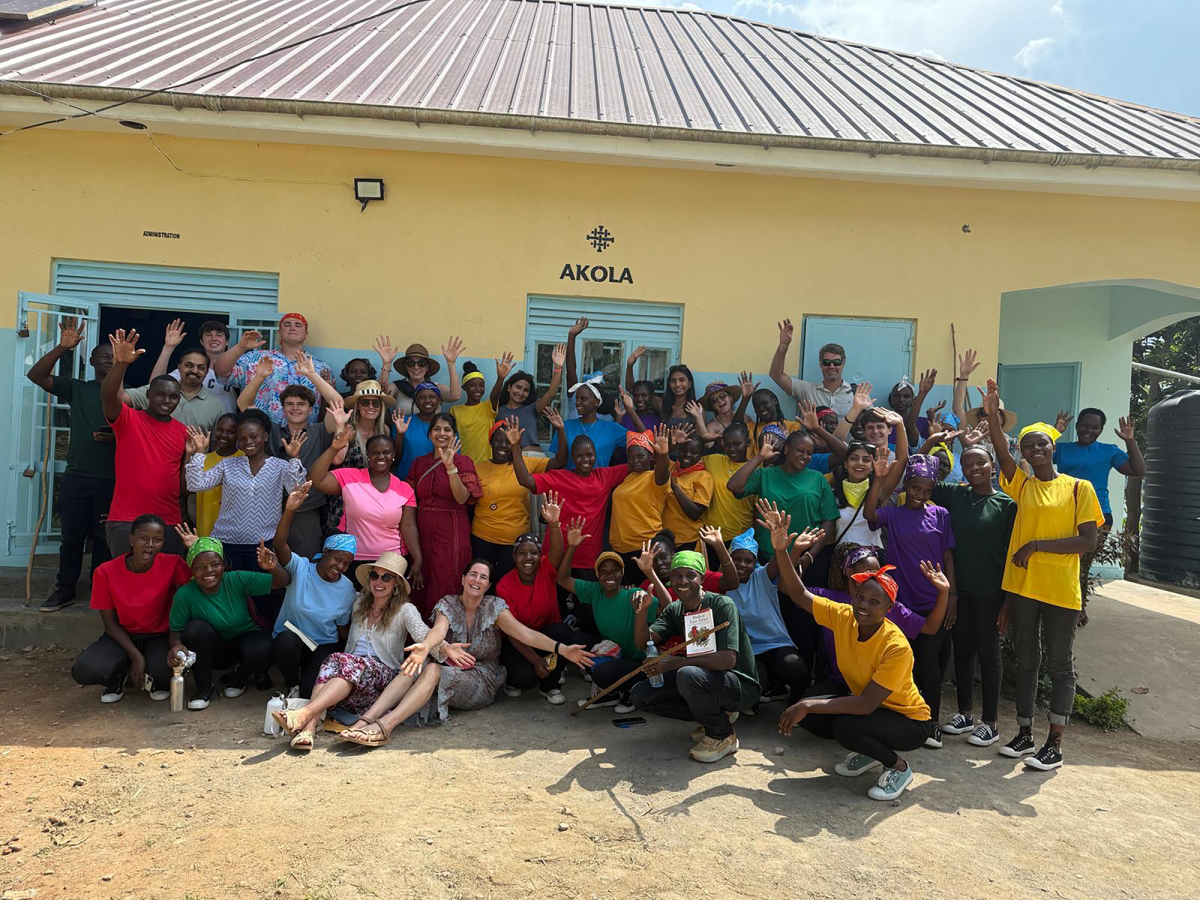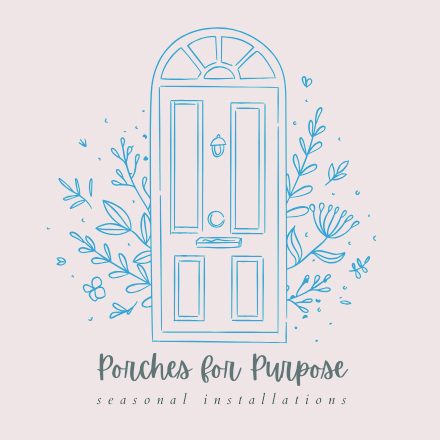Food & Herbs
Six large pots of herbs sit outside the Hockaday kitchen. Under SAGE manager Liz Flannery, the dining staff has grown many of the herbs fed to the school’s population in-house for the fall. “I’m getting ready to plant some more for the spring. This year, I have a couple garden beds coming, and I hope to put a few more herbs back there, keep it going,” Flannery said. “It may not seem like a huge thing, but it’s nice so that we don’t have to get those things trucked in.”
SAGE has also helped the school cut down on transportation by purchasing local foods. So far, it has sourced ingredients from nearby farms such as Edinburgh Farms. “Not only is it an environmental boon for the local economy, but you also don’t have transport issues, and the food is fresher,” Lindsay-Hudak said.
Motion Sensors
According to Lindsay-Hudak, an often-overlooked way that Hockaday works toward being eco-friendly is its usage of motion sensors, which automatically shut off when not being use. “Even in small things like these motion sensors in the classroom, you might have no idea how much energy that actually saves,” Lindsay-Hudak said.
Energy researchers call power consumption by devices not in use miscellaneous electrical load. This seemingly innocuous power consumption can still have a large impact, as a 2008 study attributed as high as 27 percent of home electricity use, and 10 percent of U.S. electricity use overall, to MEL. Even minute gestures like implementing automatic shutoff devices can have far-reaching effects on electricity usage. take away two hours of my life.
Science Building
As Facilities Manager Mark Buschardt points out, the new Science Center meets the requirements to be considered environmentally friendly by the Environmental Protection Agency and is thus LEAD-certified.
According to the EPA website, a firm must use “renovators…trained by EPA-approved training providers and follow lead-safe work practices” to fulfill this requirement, as well as take special precautions to minimize the usage of lead in renovating the building.
“LEAD certification is actually a really big deal, and it’s relatively hard to get. It’s very cool, because getting a LEAD certification was actually one of the school’s top priorities for this building,” Burschardt said.
Science Classes
In the classroom, science faculty help students interact and understand their relationship with the world around them. Upper School science teacher Kirsten Lindsay-Hudak, who leads AP Environmental Science and AP Human Geography, involves the environment in both these courses. While AP Environmental Science focuses more directly on the subject, AP Human Geography also involves a large environmental component. “We talk about how the earth itself has directed human history. But nowadays, we change the surface of the earth,” Lindsay-Hudak said. “And so in that way, we’re discussing environmental issues like the building of cities, agriculture, water, and how our presence and those factors have changed the earth itself.”
But Lindsay-Hudak’s aim in these courses is not to express her own experiences with the environment personally. “I want students to figure out, ‘What do they want their lives to look like? What do they want their quality of life to be?’” Lindsay-Hudak said. “And then, how can they do that so that every person has the opportunity to do that and every generation has the opportunity to have the same choices?”
Boxes, utensils, etc. in the Dining Hall
Hockaday has officially stopped usage of Styrofoam cups or utensils, which are made from Styrene – a material classified as a possible human carcinogen by both the EPA and by the International Agency for Research on Cancer. Styrene can have detrimental health effects on workers who help create Styrofoam projects.
Instead, the paper utensils used on occasion, along with the many other implements and utilities in the dining hall, are all biodegradable. Boxes from the kitchen that once carried food are either placed in Hockaday’s recycling compactor, or the “faculty and staff can take them away to use,” according to Lindsay-Hudak.
Jenny Zhu – Editor-In-Chief
Illustrations by Sari Wyssbrod


